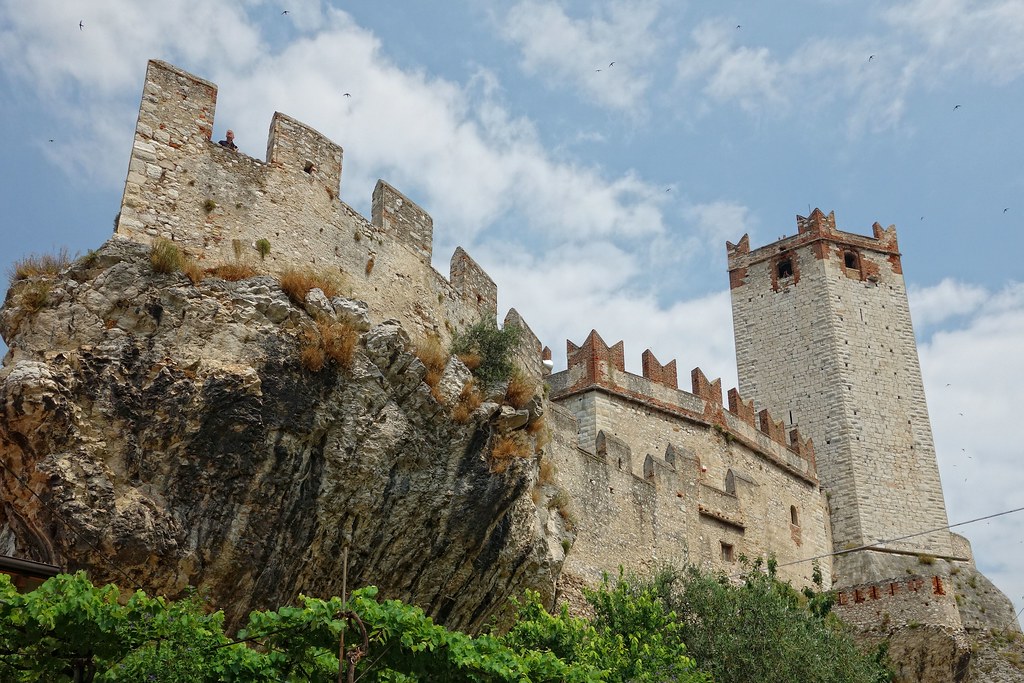Lake Garda Historic Gems
Among the stunning lakeside and mountain views Lake Garda in northern Italy is known for its history. There are many (but not too many) interesting historic sites to visit around the lake from the prehistoric and Roman times until early modern age.

Sirmione Castle
Sirmione castle was built near the end of the 12th century as part of a defensive network surrounding Verona. The castle was maintained and extended first as part of the Veronese protection against their rivals in Milan and later under the control of the Venetian inland empire.
Read more about Sirmione Castle
Rocca Castle
Rocca, a medieval castle with quadrangular bastions bounded by a canal with drawbridge, was built in 1124. It was the fortress of the noble family Scaligeri, who became the Lords of Verona. It was rebuilt several times and it was used by the Austrians as barracks in the 18th century. It is frequently the seat of cultural activities, especially during the summer months.
Read more about Rocca Castle
Malcesine Castle
Malcesine's most prominent landmark is the Castello Scaligero, which has 13th-century fortifications and an older medieval tower in white natural stone. Like the castle of Sirmione at the southern end of the lake, it is named for the della Scala family of Verona who ruled the region in the 13th and 14th centuries, and has the characteristic swallow-tail Ghibelline merlon crenallations.
Read more about Malcesine Castle
Villafranca Castle
The Castle of Villafranca di Verona was built starting in 1199, after the Battle of Ponte dei Molini (Mantua), and was completed in 1202. The purpose was to defend the population of Villafranca in casa of sudden attacks from Mantua. Serraglio, a defensive wall unique in Europe, was built in 1345.
Read more about Villafranca Castle
Peschiera Fortress
Peschiera del Garda was once the site of an ancient lake-dwelling settlement. The fortress played a prominent part in most military campaigns conducted in northern Italy after 1400. In the middle of the 16th century the fortress and town passed into the hands of the Venetians, who ordered reconstruction of the fortress according to projects by Guidobaldo da Urbino and Sanmicheli.
Read more about Peschiera Fortress
Grotte di Catullo
The Grotte di Catullo was a large Roman villa on the end of the Sirmione peninsula. The villa, built around 150 AD, is the most important example of a high-class residence in the whole of northern Italy.
Read more about Grotte di Catullo
Torri del Benaco Castle
The present castle at Torri del Benaco (Castello Scaligero) was built by Antonio della Scala in 1383 to the ruins of a older castle dating back to the Xth century. The West Tower of older castle still remains. In 1760 the second curtain wall was torn down to make way for the Lemon Grove.
Read more about Torri del Benaco Castle
Arco Castle Ruins
Arco Castle ruins are located on a prominent spur high above Arco and the Sarca Valley. The exact date of its foundation is unknown but it existed at least after the year 1000 AD.
Read more about Arco Castle Ruins
Manerba
Read more about Manerba
Ossario di San Martino
The Ossario di San Martino is a small chapel that houses over 1,200 skulls and over 2,000 bones that belonged to fallen soldiers who fought in a key 19th-century European conflict. In 1859, during the Second Italian War of Independence, there was a great battle here, more commonly called the Battle of Solferino. It was fought out between Austrian and the Piedmontese army.
Read more about Ossario di San Martino